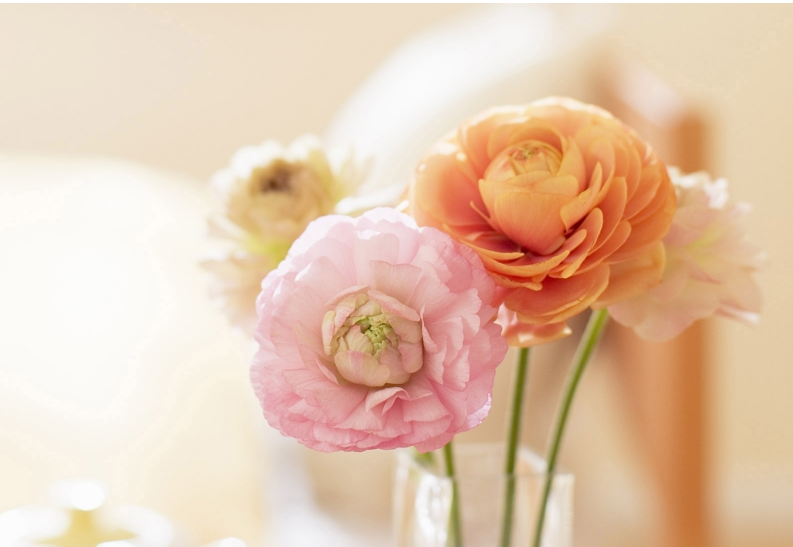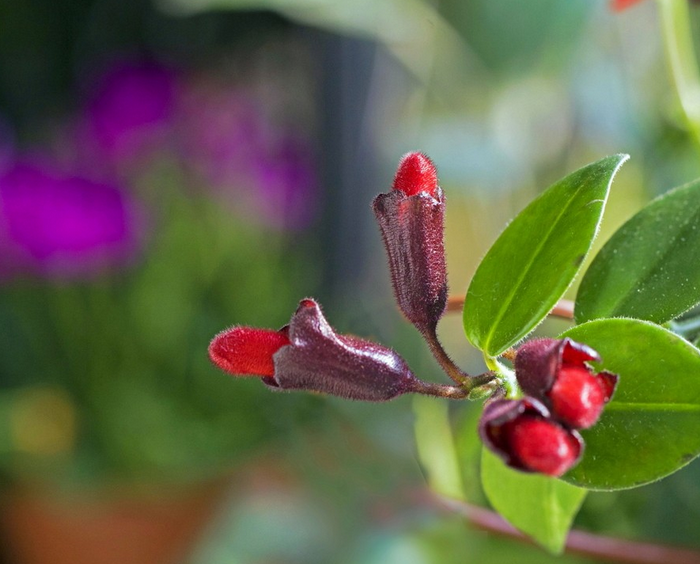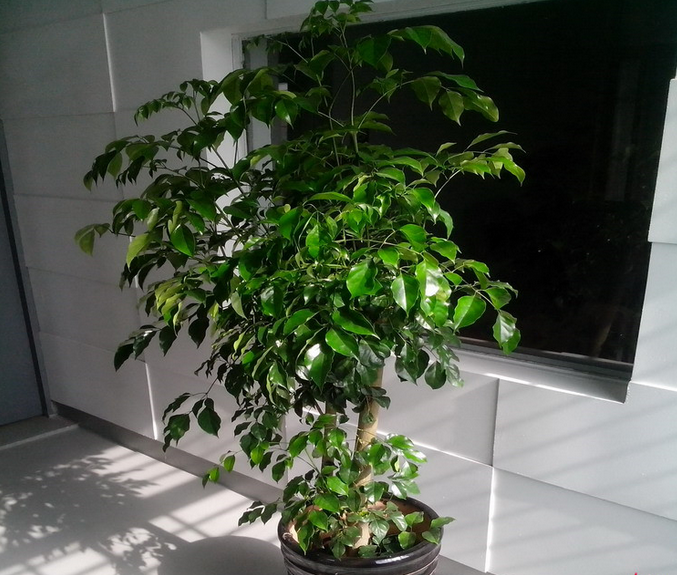Indoor potted flower culture methods matters needing attention in potted flower culture
Indoor potted flower culture methods potted flower culture matters needing attention, what kind of flowers are suitable for growing in what kind of environment, and what matters needing attention when cultivating flowers? follow the official Wechat official account "wx17house", go into the decoration net with the editor, and discuss the relevant contents of the matters needing attention in indoor potted flower culture. I hope today's content will give you some help.

Indoor potted flower culture methods matters needing attention in potted flower culture
Cultivation methods of indoor potted flowers
1. Flowers suitable for growing in the south window if the room has a south window and can receive more than 5 hours of radiation every day, then the following flowers can grow well Such as lotus, golden lotus, gardenia, camellia, morning glory, geranium, rhododendron, orchid, jasmine, Milan, pomegranate, Sichuan season, Yuxiang, daffodils, wind information, freesia, winter coral, ornamental chili, five-colored plum, chrysanthemum, calla, colored leaf grass, stone lotus, aloe, tequila, cycad, onion orchid, sedum, ground rooting, cactus, five-needle pine, needle cypress, etc.
2. Suitable for flowers raised in the east window, such as taro, cyclamen, asparagus, Tianmen winter, begonia, flower and leaf taro, camellia, rhododendron, gentleman orchid, crab claw orchid and so on.
3. The flowers suitable for the west window are easy to raise heat-resistant and strong-light vine flowers, such as Luoshi, mountain climbing tiger Lingxiao, primrose, Fufang vine, Luo Han Song and so on.
4. The flowers suitable for cultivation in the north window are hanging orchid, purple bamboo plum, tortoise back bamboo, duck toe grass, brown bamboo, ivy, bean green, Guangdong evergreen, iron fern and so on.
Matters needing attention
The main results are as follows: (1) the foliage plants with strong shade tolerance are preferred. It can be put for a long time. In winter, they need to spend the winter indoors. In the summer and autumn growing season, as long as they are placed in indoor air circulation, or indoor and windowsill, balcony and courtyard are exchanged in turn, it is best to put potted flowers outdoors at night. It can make the plant grow luxuriantly, and the four seasons are evergreen.
(2) the growth posture and placement of potted flowers should be appropriate. If it grows upright, or if the plant is taller, it should be placed in a lower place. To some branches and leaves overhanging or expansive potted flowers, they should be placed in a higher place, so that they will have a sense of three-dimensional beauty.
(3) to consider the size of plants and the size of the space in the room, the small room to put small potted flowers, appears exquisite, elegant and not vulgar. A little bit of people in the room can appropriately put some large potted flowers, such as rubber tree, tortoise back bamboo, cycad, etc., to make people feel beautiful.
(4) the color of potted flowers should be coordinated with the color of indoor walls and furniture. This can produce contrast, reflect the overall beauty of the factory, and improve the appreciation value. In addition, there can be a suitable purple sand basin, glaze basin or flower basket or bamboo basin cover on the mud basin coat. Also consider the reasonable selection of boxes, shelves, several, cases and other furnishings.
Indoor potted plants with clean air are suitable for indoor potted flowers.
Indoor potted plants with clean air are suitable for indoor potted flowers, which are suitable for indoor potted flowers, and which plants are suitable for indoor potted plants? follow the official Wechat official account "wx17house", and walk into the decoration network with editors to explore the contents of indoor potted flowers suitable for indoor potted flowers. I hope today's content will bring some help to you.
Indoor potted plants with clean air are suitable for indoor potted flowers.
Indoor plants that purify the air: hanging orchids
In a room of 8-10 square meters, the hanging orchid is equivalent to a green natural air purifier. Data show that after putting the orchid into the room for 24 hours, 80% of the harmful substances in the room are killed and 86% of the formaldehyde is absorbed; at the same time, the orchid can absorb carbon monoxide and nitrogen peroxide emitted by stoves, electrical appliances and plastic products. (another plant that can efficiently absorb formaldehyde is ivy.)
Cymbidium is easy to survive, has strong adaptability, is resistant to drought but not cold, and likes moist semi-shady environment.
One of the indoor plants to purify the air: Tiger's tail orchid
Tiger tail orchid is the "anti-pollution expert" in the room. In the same room of 8-10 square meters, a pot of tiger tail orchid can absorb more than 80% of the harmful gases in the room, and has a strong ability to absorb formaldehyde. In addition, tiger tail orchid can release a lot of oxygen during the day.
Tiger tail orchid likes to be warm and humid, resistant to drought, light and shade.
Indoor plants that purify the air: aloe vera
Aloe vera ranks at the forefront of indoor plants that purify the air. As the saying goes, "aloe vera is a strong hand, and formaldehyde is scared to hide." It is the best proof of the efficacy of aloe. A pot of aloe vera can eliminate 90% formaldehyde in 1 cubic meter of air under 24-hour lighting.
Aloe likes warm, dry climate, cold resistance is not strong, not shade-tolerant. Aloe is not only the best choice of indoor plants to purify the air, but also has strong medicinal value, such as sterilization and cosmetic effect.
Indoor plants that purify the air: Ivy
Ivy has the highest ability to absorb formaldehyde among many plants. A pot of ivy can destroy 90% of benzene in an 8-10 square meter room, deal with bacteria and other harmful substances brought back from outdoors, and even absorb dust that is difficult to absorb by vacuum cleaners.
Ivy is shady, moist, not cold-resistant and has strong viability.
Indoor plants that purify the air: tequila
Tequila can eliminate 70% benzene, 50% formaldehyde and 24% trichloroethylene in a room of about 10 square meters.
Tequila prefers warm, dry and sunny environments. Slightly resistant to cold, more tolerant to shade and strong resistant to drought.
Special hint: because plants breathe at night will release carbon dioxide, so the bedroom should not put too many plants, otherwise it may affect the quality of sleep. For impassable rooms, such as study, living room, bedroom and so on, the decoration materials used are different, and the pollution produced is also different, so you can choose plants with impassable functions. In addition, choose and put plants according to the size of the room area. Under normal circumstances, about 10 square meters of the room, 1.5 meters high plants put two pots is more appropriate.
Potted flowers suitable for indoor use
1. Yiluoshi
Huaye Luoshi is an evergreen woody vine with inconspicuous lenticels in its stem. Branchlets, young petioles and leaves abaxially pubescent, old branches and leaves glabrous. It is a light-loving, strong shade-tolerant plant and likes the environment with high air humidity. it can be used as a perennial "flowering" plant for various flower mirror arrangements. at the same time, it is also an excellent potted plant material.
Function: strong adaptability. Lax requirements on the soil, strong ability to absorb dust, can purify the air and evergreen, flowers as clean as snow, fragrance. It can also be planted in gardens and parks, and it can also be used to afforest the factory area with serious pollution. it is an ideal ribbon land to be planted.
2. Thyme
The aroma of thyme is a paradise at dawn, because it smells fresh and charming, natural and comfortable, as pure and beautiful as heaven, and a symbol of courage.
Function: it can strengthen nerves and activate brain cells, thus improving memory and attention. Boost depression, feelings of exhaustion, and frustration. It is said that it can release the imprisoned mind and soothe the trauma of the soul.
3. Chrysanthemum
Chrysanthemum is one of the most important flowers in garden application, which is widely used in flower beds, ground covers, potted flowers and cut flowers. Some are used for medicine or as cool drinks for relieving summer heat, such as Chuju, Hangzhou white chrysanthemum and so on.
Function: it has a cool and sedative effect, such as headache, vertigo, hypertension, neuropathic headache and conjunctivitis. In addition, the variety of chrysanthemum flowers, proud frost fighting snow, independent cold autumn, not afraid of the cold character makes people all the more favored.
4. Jasmine flower
Evergreen small shrub jasmine has green leaves, white flowers and strong fragrance. It is a common garden and potted ornamental fragrant flower. Multi-purpose potted plants, decorated with room volume, elegant and pleasant, but also can be processed into garlands and other decorations. Most of the yellow and fragrant white flowers of deciduous vines are one of the best ways to decorate winter gardens in many foreign gardens.
Function: Jasmine fragrance overflows, can extract jasmine oil, is the raw material for making essence, the price of jasmine oil is very high, equivalent to the price of gold. Jasmine flowers, leaves and roots can be used as medicine. Jasmine can also fumigate tea or steam juice instead of rose dew. Suzhou, Nanjing, Hangzhou and Jinhua, which are located in the south of the Yangtze River, have long been produced as smoked tea spices.
5. Roses
Rose, also known as thorn rose, lingering flower, assassin, heart-piercing rose. Shrubs of the genus Rosaceae. Bright red flowers with fluffy light, high heart crimping, flower shape is very beautiful, petal hard, leaves small, dark green, thick. The branches are stiff, slightly curved and spiny.
Function: flowers are mainly used in food and extract rose oil, rose oil has higher value than equal weight gold, and is used in cosmetics, food, fine chemicals and other industries. In addition, it also symbolizes the beautiful and pure love, different colors represent different meanings, and are the key flowers to express love. Can be used for any occasion, for Valentine's Day special flowers.
6. Milan
Milan is people's favorite flower plant, with many branches and dense branches; pinnate compound leaves alternate, leaflets 3 ~ 5, shiny; flowers as small as millet, golden yellow, polygamous plants, axillary panicles; new shoots bloom, blooming in summer and autumn; fragrance overflowing when flowering, smell like orchid.
Role: Milan potted plants can be displayed in the living room, study and porch, flowers in season aroma, fresh and elegant, comfortable mind and body, as edible flowers, can extract essence. Milan is also an excellent scenic tree in the southern courtyard. It symbolizes that with love, life will blossom.
Indoor potted flowers, potted key points and matters needing attention
Source of potted plants: potted plants evolved from traditional Chinese garden art. As for the cultivation of ornamental plants, it originated from ancient gardens to imitate natural landscapes to create gardens. There are Yao ginseng in summer, Lutai in Shang and Lingtai in Zhou.
Common potted tree species and ornamental classification according to tree species and ornamental classification
(1) evergreen broad-leaved trees: banyan, red banyan, ivory tree, Luohan pine, moon tangerine
Needles: black pine, red pine, golden pine, five-leaf pine, juniper, real cypress, Chinese fir, cypress, flat cypress, Casuarina equisetifolia, spruce, dragon cypress, golden cypress
Miscellaneous trees: plum blossom, rhododendron, pomegranate, pile, wisteria, camellia, papaya, acacia, longevity plum, mahogany, begonia, apricot blossom, crape myrtle
Fruit: pear, pomegranate, Huangzhi, bergamot, mulberry, hairy persimmon, Ji apple, number one red, golden bean orange, cherry
View leaves and cold trees: Maple, maple, yellow peel, jade leaf, Pistacia chinensis, beech, elm, plain,
Ginkgo biloba, golden willow, weeping willow, Tamarix, mountain meditation, stone plum, sparrow plum
(2) Phyllostachys pubescens, Phyllostachys pubescens and Brown Bamboo.
Herbaceous cymbidium, cold orchid, cymbidium, golden dragon edge, grass orchid, cycad, Reed, Ji Rose, Gladiolus, Fengzhi grass, mountain moss, red moss, velvet moss, Ji rhododendron
Classify by the number of trees
It is roughly divided into two types: single work and re-work. Single-stem trees have only one trunk in the basin, while compound-dry trees have more than two trunks in the basin.
Single dry-straight dry, oblique dry, curved dry (appearance wood), etc.
Re-dry-double trunk, three trunk, five trunk, seven trunk, co-planting, clump, root and so on.
In order to ensure the quality of flowers, further improve the landscape effect and provide high-quality flowers for urban greening, Fangshan District of Beijing has summed up six feasible experiences and measures in many years of summer flower cultivation management and urban landscape flower layout.
The six measures are:
First, substrate cultivation is used to make the soil have good permeability.
The second is to control the temperature and carry out comprehensive control through ventilation, shading, water spraying and other measures.
The third is to apply fertilizer reasonably according to the different growth periods of flowers.
Fourth, adjust the distance between flowerpots to ensure a good ventilated environment.
Fifth, make good drainage measures to ensure the smooth flow of drainage.
Sixth, fungicides and insecticides are sprayed regularly to control diseases and insect pests.
- Prev

Analysis of culture methods and matters needing attention of lipstick orchid
Lipstick hanging orchid, also known as flower grass, is very beautiful and is deeply loved by people. The editor of the decoration network reminds you that when you cultivate lipstick orchids, you must first master some relevant knowledge. let's learn more about it with the editor of the decoration network.
- Next

Indoor pot culture matters needing attention in pot culture of Ping an tree
Indoor potted plants are commonly used in home decoration, and Ping an tree potted plants are also the choice of many people, so what do you need to pay attention to when cultivating Ping an trees in potted plants? follow the official Wechat official account "wx17house", and go into the decoration network together with the editor.
Related
- Fuxing push coffee new agricultural production and marketing class: lack of small-scale processing plants
- Jujube rice field leisure farm deep ploughing Yilan for five years to create a space for organic food and play
- Nongyu Farm-A trial of organic papaya for brave women with advanced technology
- Four points for attention in the prevention and control of diseases and insect pests of edible fungi
- How to add nutrient solution to Edible Fungi
- Is there any good way to control edible fungus mites?
- Open Inoculation Technology of Edible Fungi
- Is there any clever way to use fertilizer for edible fungus in winter?
- What agents are used to kill the pathogens of edible fungi in the mushroom shed?
- Rapid drying of Edible Fungi

